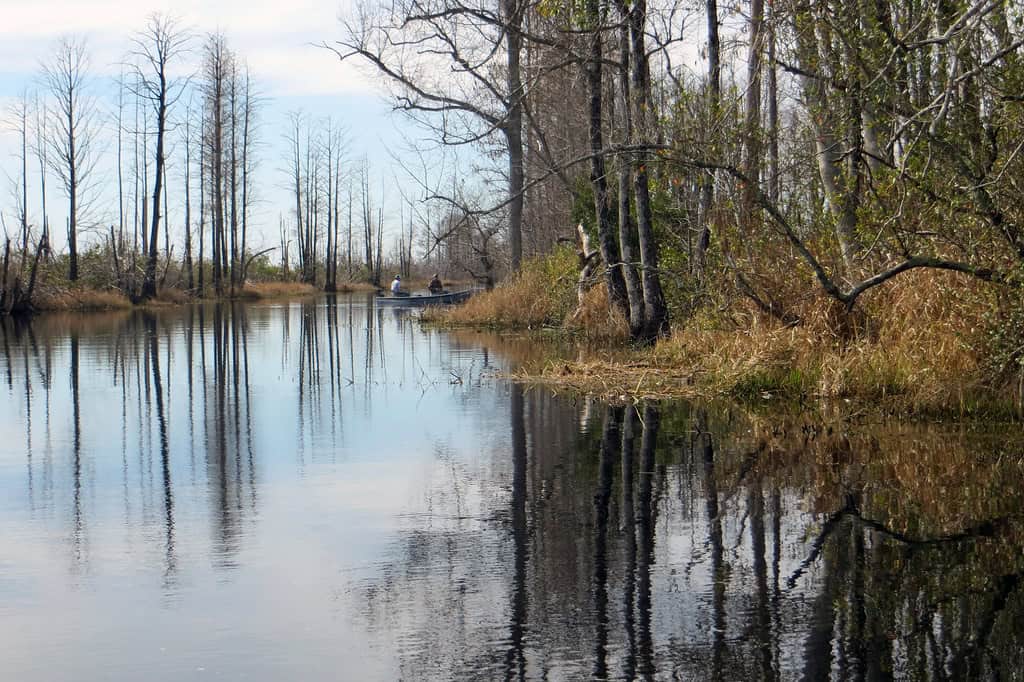Nestled between the bustling coastlines of America, there exists a precious ecosystem that has largely escaped public attention despite its remarkable ecological significance. The Okefenokee Swamp, spanning approximately 438,000 acres across the Georgia-Florida border, represents one of North America’s most pristine and diverse wetland systems. Despite its status as the largest blackwater swamp in North America, this extraordinary wetland remains relatively unknown to many Americans. Yet, within its tea-colored waters and moss-draped cypress trees thrives a wildlife sanctuary of astonishing biodiversity, creating a critical refuge for countless species. This forgotten natural treasure stands as a testament to the importance of wetland conservation in an increasingly developed world.
The Geological Origins of Okefenokee

The Okefenokee Swamp began forming approximately 7,000 years ago when sea levels stabilized after the last ice age. Originally part of the ocean floor, the depression that would become the swamp gradually accumulated layers of peat as vegetation died and decomposed in the acidic, low-oxygen environment. Over millennia, this peat accumulation, sometimes reaching depths of 15 feet, created the distinctive blackwater characteristics that define the swamp today.
The peat acts as a natural filter and reservoir, while simultaneously releasing tannins that give the water its characteristic tea color. This ancient geological process has created a self-contained watershed that serves as the headwaters for both the Suwannee and St. Marys Rivers, making it a critical hydrological feature of the southeastern United States.
A Biodiversity Hotspot Like No Other
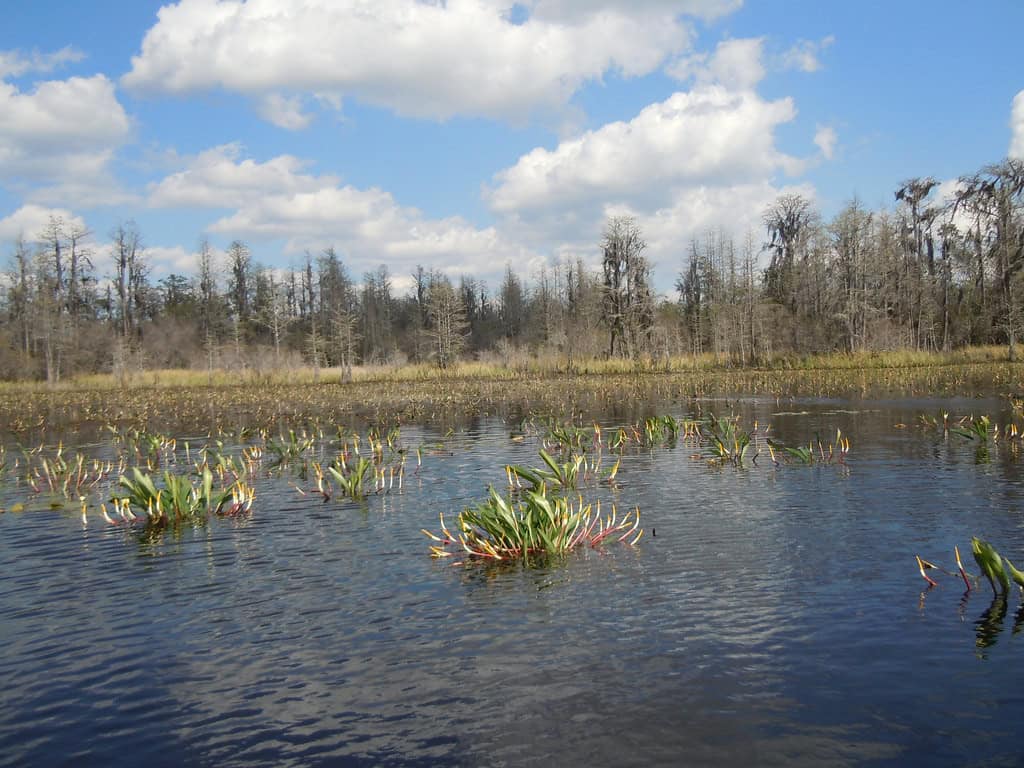
The ecological diversity of the Okefenokee defies simple categorization. This wetland complex harbors more than 850 plant species, ranging from delicate carnivorous sundews and pitcher plants to towering cypress trees draped in Spanish moss. Animal diversity is equally impressive, with records documenting approximately 200 bird species, 60 reptile species, 33 amphibian species, 39 fish species, and numerous mammals.
The complex mosaic of habitats—including cypress swamps, marshes, islands, lakes, and forests—creates countless ecological niches that support this remarkable biodiversity. Scientists continue to discover new species relationships and ecological processes within this relatively undisturbed ecosystem, making it an invaluable living laboratory for understanding wetland ecology in its most natural state.
The American Alligator’s Stronghold

Perhaps no species is more emblematic of the Okefenokee than the American alligator (Alligator mississippiensis). An estimated 15,000 alligators call the swamp home, making it one of the most significant populations in the United States. These ancient reptiles serve as ecosystem engineers, creating “gator holes” during dry periods that retain water and provide critical habitat for fish, amphibians, and other wildlife.
The alligator’s comeback from near extinction in the mid-20th century to its current abundance represents one of America’s wildlife conservation success stories. Visitors to the swamp often observe these remarkable predators basking along waterways or displaying their distinctive territorial calls—behaviors that have remained unchanged for millions of years in this pristine wetland.
A Haven for Endangered Species

Beyond its alligator population, the Okefenokee provides crucial habitat for numerous threatened and endangered species. The red-cockaded woodpecker, a federally endangered bird that requires mature pine forests for nesting, maintains important populations within the swamp’s upland areas. The indigo snake, North America’s longest native snake species and a threatened animal, finds refuge in the swamp’s diverse habitats.
The Florida panther, critically endangered with fewer than 200 individuals remaining in the wild, occasionally ventures into the southern portions of the swamp. The round-tailed muskrat, wood stork, and gopher tortoise are other species of conservation concern that depend on this wetland complex. As development continues to fragment habitat throughout the Southeast, the Okefenokee’s role as a sanctuary for these vulnerable species becomes increasingly vital.
The Watershed’s Vital Importance
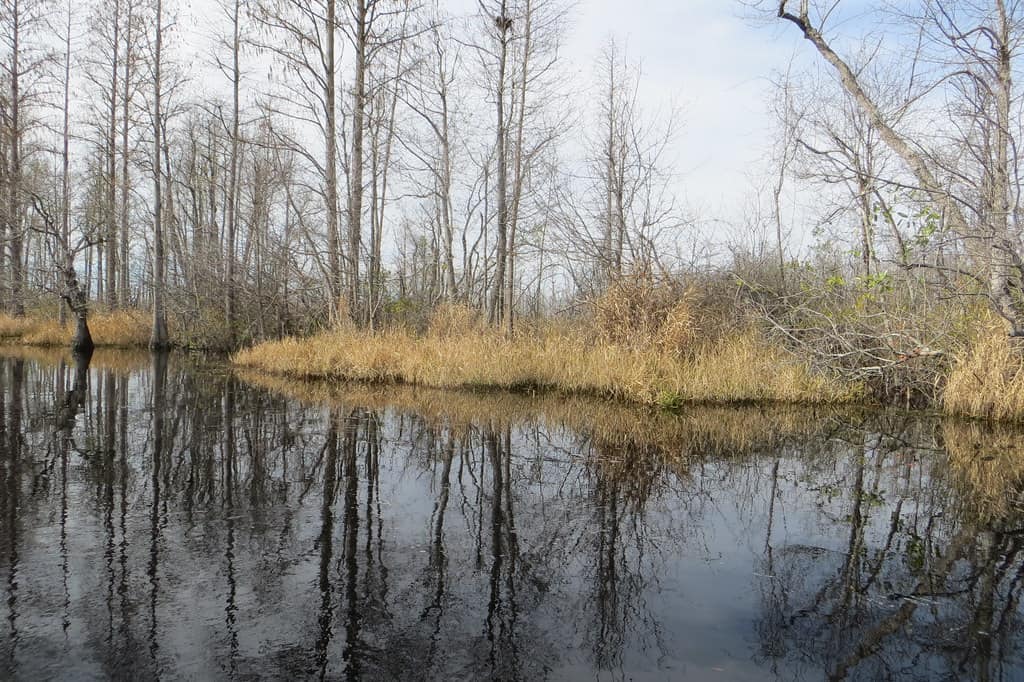
The hydrological significance of the Okefenokee extends far beyond its boundaries. As the headwaters for two major river systems—the iconic Suwannee River flowing to the Gulf of Mexico and the St. Marys River emptying into the Atlantic—the swamp influences water quality across a vast region. Its natural filtration system purifies water and regulates flow, providing ecosystem services valued in the billions of dollars annually.
During heavy rainfall, the swamp acts as a massive sponge, absorbing floodwaters and gradually releasing them, thereby reducing downstream flooding. In periods of drought, the stored water sustains river flows that might otherwise diminish dramatically. This natural water management system operates with an efficiency and effectiveness that engineered systems simply cannot match, highlighting the irreplaceable nature of large, intact wetlands.
A Living Cultural Heritage

The human history of the Okefenokee is as rich and varied as its ecological systems. For thousands of years, indigenous peoples, including the Creek and later the Seminole tribes, lived in and around the swamp, developing sustainable lifeways adapted to this challenging environment. The name “Okefenokee” itself derives from the Muscogee (Creek) words meaning “trembling earth,” referencing the floating peat mats that characterize portions of the swamp.
European settlers largely avoided the area until the late 19th century, when logging operations began extracting the valuable cypress timber. Following this period of exploitation, conservationists campaigned for protection, resulting in the establishment of the Okefenokee National Wildlife Refuge in 1937. Today, descendants of the early European settlers, known locally as “Swampers,” maintain distinctive cultural traditions that reflect generations of adaptation to life alongside this remarkable wetland.
Threats to a Fragile Ecosystem

Despite its protected status, the Okefenokee faces significant threats in the 21st century. Mining operations proposed along Trail Ridge, the eastern geological feature that helps contain the swamp’s waters, could potentially disrupt the delicate hydrological balance that sustains the entire ecosystem. Climate change presents additional challenges, as rising temperatures and altered precipitation patterns affect water levels and increase wildfire risks.
In 2007 and 2011, massive wildfires burned significant portions of the swamp—a natural process in the ecosystem’s cycle, but one that becomes more frequent and intense with climate change. Invasive species, including feral hogs that destroy native vegetation and the exotic island apple snail that competes with native species, further threaten the ecological integrity of this unique wetland. Conservation efforts must address these multiple challenges to ensure the swamp’s future.
Conservation Efforts and Protected Status

The protection of the Okefenokee represents one of America’s early conservation victories. Established as a National Wildlife Refuge in 1937, approximately 403,000 acres of the swamp are managed by the U.S. Fish and Wildlife Service. In 1974, Congress designated 353,981 acres as the Okefenokee Wilderness, the third largest Wilderness Area east of the Mississippi River. This designation provides the highest level of protection under U.S. law, prohibiting roads, structures, and motorized equipment in most circumstances. In 1986, the swamp received international recognition when it was designated a Wetland of International Importance under the Ramsar Convention. These overlapping protections have preserved the swamp’s ecological integrity, though ongoing vigilance is required to address new threats as they emerge.
Scientific Research and Discoveries
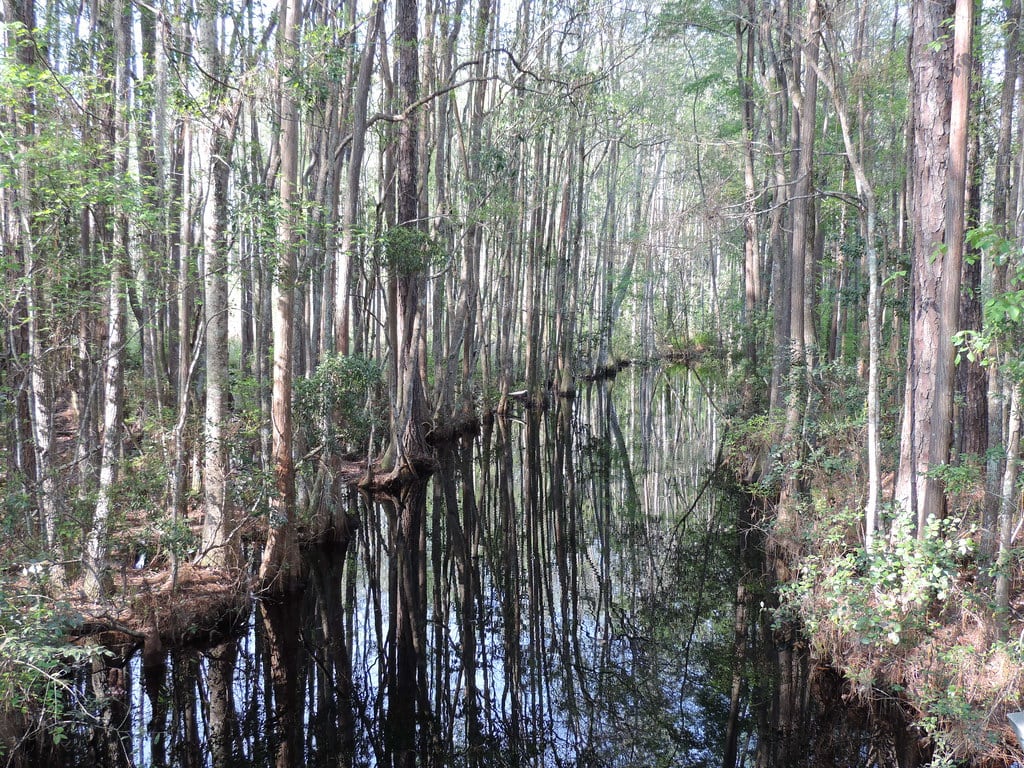
The Okefenokee serves as a living laboratory for scientists studying wetland ecology, hydrology, and biodiversity. Research conducted in the swamp has contributed significantly to our understanding of peat formation, carbon sequestration, and fire ecology in wetland systems. The relatively undisturbed nature of the ecosystem provides baseline data that helps scientists understand the impacts of human activities on other, more disturbed wetlands.
Recent research has focused on the swamp’s role in carbon storage—with estimates suggesting the peat deposits sequester millions of tons of carbon that would otherwise contribute to climate change if released. The discovery of new species continues even today, with several invertebrates new to science identified in recent years. The swamp’s value as a scientific resource cannot be overstated, particularly as natural wetlands become increasingly rare worldwide.
Ecotourism and Public Access
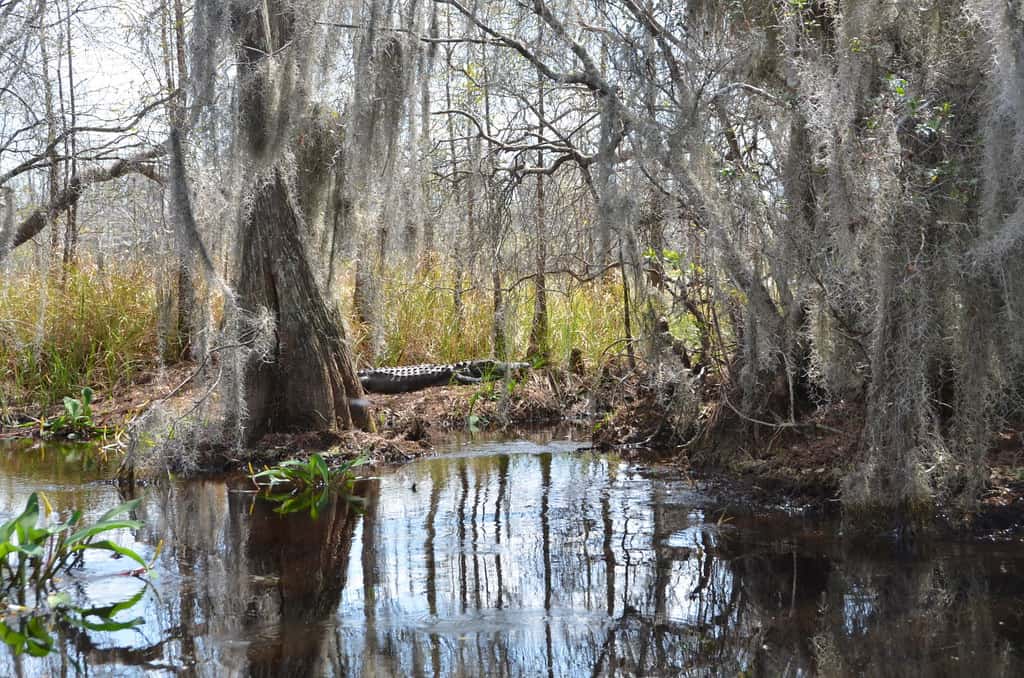
Despite its remote location and challenging environment, the Okefenokee has developed a modest but significant ecotourism industry that balances public access with conservation needs. Approximately 600,000 visitors explore the swamp annually through three main entry points: the Suwannee Canal Recreation Area (east), Stephen C. Foster State Park (west), and Okefenokee Swamp Park (north). Guided boat tours, canoe and kayak rentals, and boardwalks provide various ways to experience the swamp’s beauty and wildlife.
For more adventurous visitors, overnight canoe trips allow camping on platforms within the wilderness area, offering an immersive experience in this primeval landscape. This carefully managed tourism generates approximately $64 million annually for the local economy while building public support for conservation. The challenge remains balancing visitor access with the need to protect the very wilderness qualities that make the Okefenokee so special.
Photography and Artistic Inspiration

The haunting beauty of the Okefenokee has inspired generations of photographers, painters, writers, and filmmakers. The iconic black water reflecting cypress trees draped in Spanish moss creates otherworldly scenes that have graced the pages of National Geographic and countless nature publications. Award-winning wildlife photographers regularly visit to capture images of the swamp’s inhabitants, from soaring ospreys to basking alligators.
The mysterious quality of the landscape has also inspired literary works, including Lydia Bacon’s 1926 novel “The Land of the Trembling Earth” and numerous poems celebrating the swamp’s wild character. In recent years, documentary filmmakers have brought the Okefenokee to wider audiences, highlighting both its ecological importance and the threats it faces. Through these artistic interpretations, even those who may never visit in person can appreciate the unique character of this remarkable wetland.
The Future of the Okefenokee

The future of the Okefenokee Swamp hangs in a delicate balance between preservation and various pressures for resource exploitation. Conservation organizations continue to advocate for expanded buffer zones around the refuge to protect watershed integrity and wildlife corridors. Citizen science initiatives engage the public in monitoring water quality, wildlife populations, and invasive species, building a broader constituency for conservation.
Educational programs at the refuge visitor centers and in surrounding communities work to connect new generations with this natural heritage. The swamp’s international significance as a biodiversity hotspot, carbon sink, and wilderness area strengthens the case for its continued protection. If managed wisely and protected from short-sighted exploitation, the Okefenokee will continue to function as it has for millennia—a dynamic, self-sustaining ecosystem that represents wilderness in its truest form, benefiting both wildlife and human communities far beyond its boundaries.
Conclusion
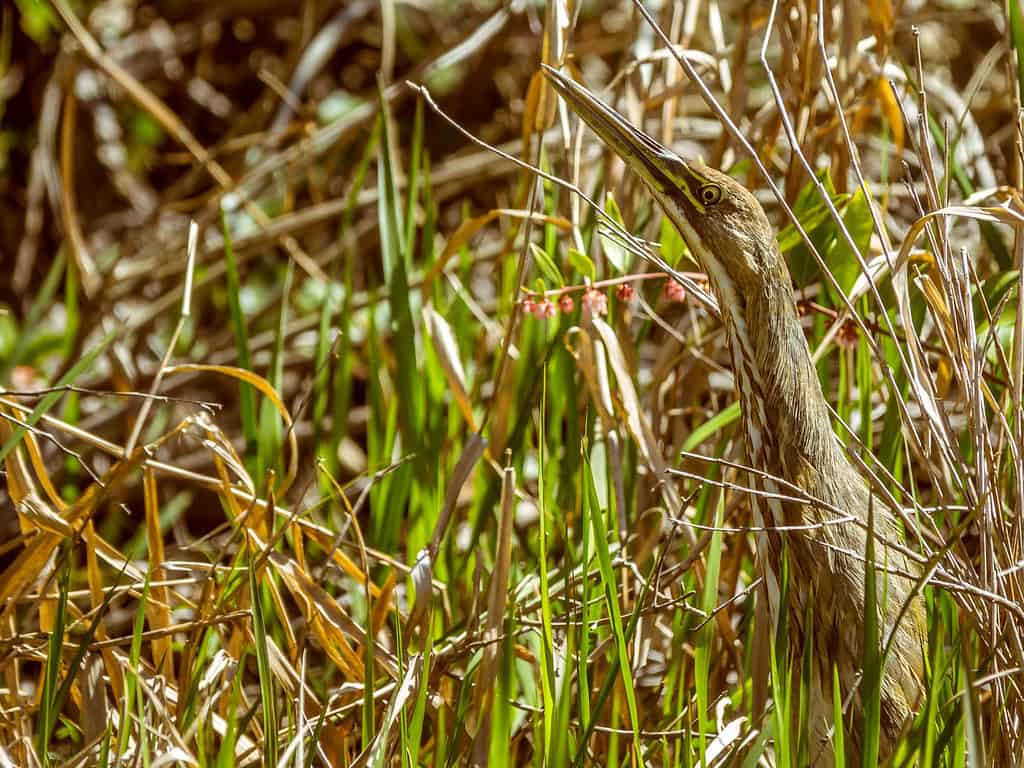
The Okefenokee Swamp represents one of America’s most valuable yet underappreciated natural treasures—a wilderness that has managed to retain its primeval character despite centuries of human activity surrounding it. Its extraordinary biodiversity, from iconic alligators to rare carnivorous plants, creates a living museum of wetland ecology unmatched in North America. As we face growing challenges from climate change, habitat fragmentation, and resource exploitation, the preservation of intact ecosystems like the Okefenokee becomes increasingly crucial for both wildlife conservation and human well-being. By recognizing the ecological, scientific, cultural, and economic value of this forgotten wetland, we can ensure that future generations will still experience the wonder of hearing a chorus of frogs under a full moon, watching an osprey dive for fish in tea-colored water, or feeling the gentle sway of a “trembling earth” beneath their feet.
- This Massive Crocodile Fossil Dwarfs Anything Alive Today - August 15, 2025
- From Symbol to Supper: The Cultural Journey of the Chicken - August 15, 2025
- The Lizard That Brought Fire: Aboriginal Australian Legends - August 15, 2025

